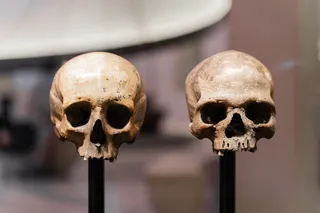Online dating is big business these days. There are approximately 324 million online daters around the world, according to an industry report, earning app developers an estimated $5.6 billion in revenue in 2021. A considerable portion of those looking for romance online — 42 percent — say they’re on the hunt for a spouse, but only 13 percent end up getting married to someone they meet online. In fact, research has already shown that judging a potential suitor based on written or visual stimuli (for example, an online profile) does not accurately predict attraction during a first encounter.
This disconnect might be caused by how hard it is to pin down a working definition of attraction. Someone can seem witty over text and check all the right boxes on paper, but then the all-important “spark” just isn’t there in person.
Understanding and quantifying how sexual and romantic desirability works is ...















